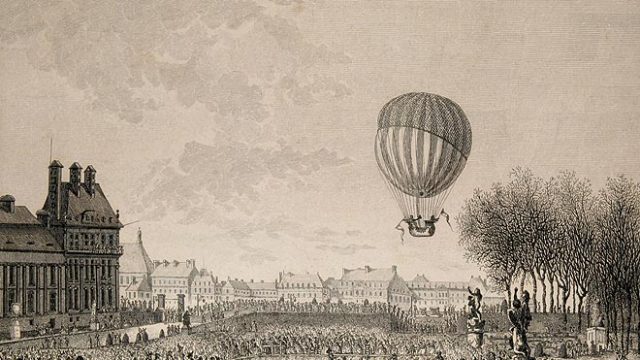Hot air ballooning has quickly become a craze in the tourism world. From Tuscany to Pushkar, the ‘experience’ isn’t complete unless you jump aboard a balloon and drift on high for a bird’s-eye view. Today, all balloons use an on-board heat source powered by propane to heat the air within the balloon for buoyancy. This idea was first developed in late-18th century France, when a spectacularly artistic 60,000 cubic foot hot air balloon was flown by the Montgolfier brothers Jacques-Étienne and Joseph-Michel on October 15, 1783. It was a tethered flight, and the piloted balloon rose to a height of 80ft, which was the length of the tether. It was a huge sensation, and sparked off a race of sorts. Using this design, named the La Montgolfière in their honour, a free manned flight was made by the science teacher Jean-François Pilâtre de Rozier and the Marquis d’Arlandes on November 21, 1783 from the western outskirts of Paris. This balloon rose to a height of 3,000ft above the city and travelled a distance of 9km.
At around the same time, work was progressing on a gas-fuelled balloon, especially since the discovery of hydrogen in 1766. The French inventor, scientist and mathematician Jacques Charles, along with the Robert Brothers, built the first hydrogen balloon. They successfully flew in it on December 1, 1783 from the Jardin des Tuileries in Paris. This balloon rose to a height of 1,800ft with two pilots. Later that day, when manned solely by Charles, it rose to a staggering height of 9,000ft. It was after sunset, but the balloon rose so high that Charles was able to see the sun again, on the horizon. This engraving of the historic liftoff of the hydrogen balloon was made by the artist Louis-Alexandre Bouteloup. It shows the public spectacle that accompanied the scene, with hundreds paying the princely sum of 1 Crown to be in a special enclosure around La Charlière. This marks the moment that yet another way to see the world became a distinct possibility.




